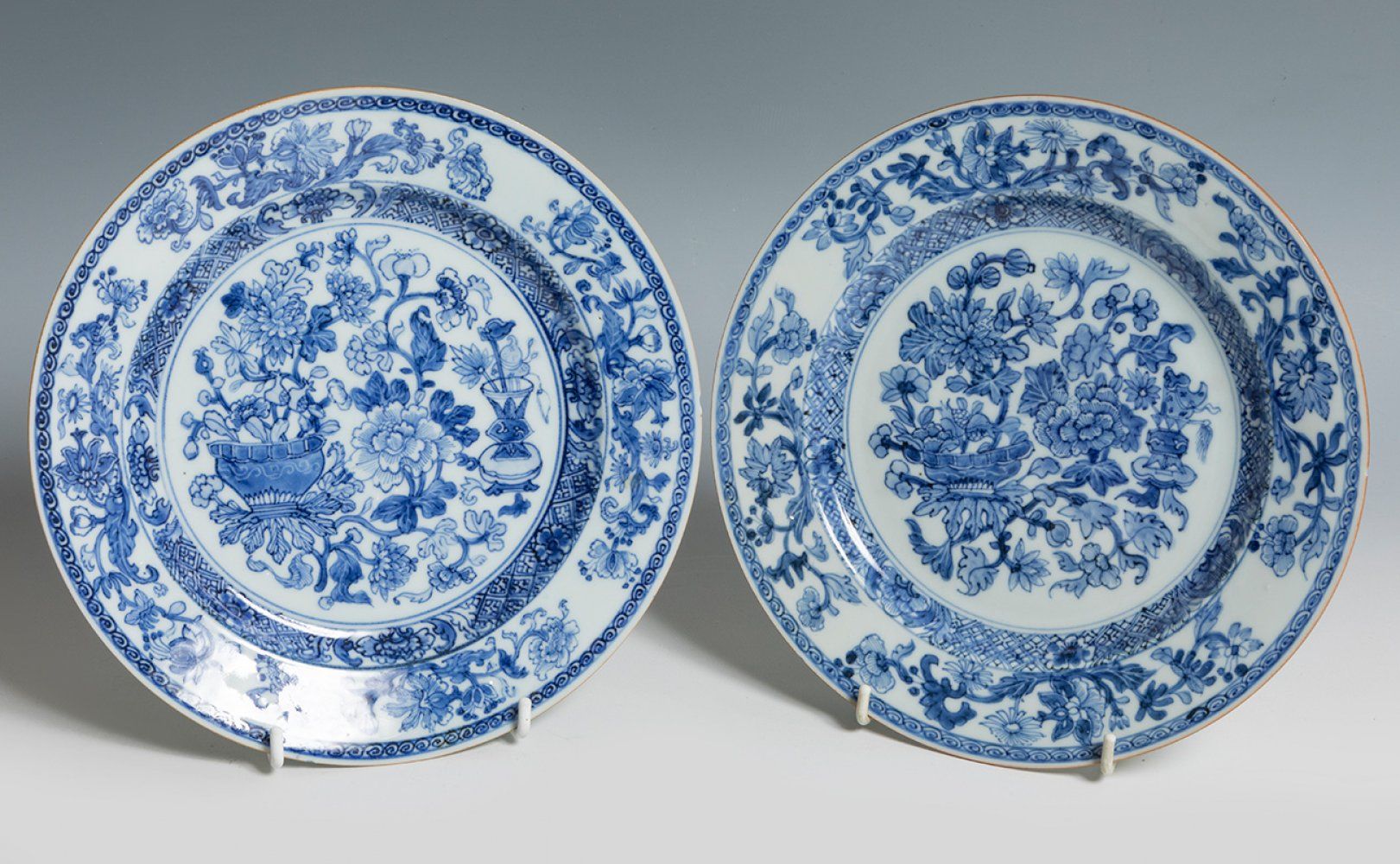Description
Pair of dishes. China, 18th century. Enamelled porcelain. Measurements: 23 cm (diameter). Pair of enamelled porcelain plates, in which the bichrome between cobalt blue and white stands out. They have beautiful and profuse floral compositions on their seats, which occupy practically their entirety. The eaves are interlaced with a variety of plant species. It is modelled on the Kangxi period. The Kangxi Emperor was one of the most important monarchs in Chinese history, and in fact his reign of 61 years, parallel to that of Louis XIV in France, is the longest in the country's history, and established the power of the new Qing dynasty. It was a period of cultural splendour, thanks in large part to the emperor's own intense artistic patronage. As the Qing was a dynasty of foreign (Manchu) origin, Kangxi strove to assert his legitimacy as China's absolute monarch by striking a balance between respect for Manchu traditions and Chinese forms of government, and by assuming the role of an enlightened ruler on the Confucian model. The emperor himself practised calligraphy and painting, the two most highly regarded arts in China, and maintained Zhu Xi's Neo-Confucian canon as the standard of culture on which the imperial examinations were based. In this way, the Kangxi Emperor promoted the idea of the new dynasty as the legitimate successor of the previous Ming dynasty, extolling the achievements of the former Ming dynasty. The emperor did much to support literature, and also promoted the fine arts. In 1661, the imperial workshops were founded in Beijing, where courtly sumptuary objects, ranging from porcelain to paintings and ritual objects, were produced. Silk production workshops were also established at this time in the southern cities of Suzhou, Hangzhou and Jiangning.
60
Pair of dishes. China, 18th century. Enamelled porcelain. Measurements: 23 cm (diameter). Pair of enamelled porcelain plates, in which the bichrome between cobalt blue and white stands out. They have beautiful and profuse floral compositions on their seats, which occupy practically their entirety. The eaves are interlaced with a variety of plant species. It is modelled on the Kangxi period. The Kangxi Emperor was one of the most important monarchs in Chinese history, and in fact his reign of 61 years, parallel to that of Louis XIV in France, is the longest in the country's history, and established the power of the new Qing dynasty. It was a period of cultural splendour, thanks in large part to the emperor's own intense artistic patronage. As the Qing was a dynasty of foreign (Manchu) origin, Kangxi strove to assert his legitimacy as China's absolute monarch by striking a balance between respect for Manchu traditions and Chinese forms of government, and by assuming the role of an enlightened ruler on the Confucian model. The emperor himself practised calligraphy and painting, the two most highly regarded arts in China, and maintained Zhu Xi's Neo-Confucian canon as the standard of culture on which the imperial examinations were based. In this way, the Kangxi Emperor promoted the idea of the new dynasty as the legitimate successor of the previous Ming dynasty, extolling the achievements of the former Ming dynasty. The emperor did much to support literature, and also promoted the fine arts. In 1661, the imperial workshops were founded in Beijing, where courtly sumptuary objects, ranging from porcelain to paintings and ritual objects, were produced. Silk production workshops were also established at this time in the southern cities of Suzhou, Hangzhou and Jiangning.
